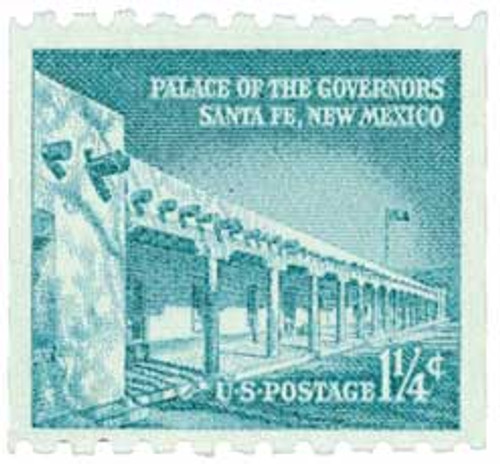
# 1059A - 1965 Liberty Series Coil Stamps - 25¢ Paul Revere
1965 25¢ Paul Revere
Liberty Series Coil
City: Wheaton, Maryland
Quantity: Unknown
Printed by: Bureau of Engraving and Printing
Printing Method: Rotary Press
Perforations: 10 Vertically
Color: Green
Birth Of Paul Revere
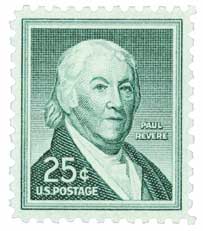
Paul Revere was born on January 1, 1735, according to the modern calendar (December 21, 1734 by the Old Style calendar) in the North End of Boston.
Revere’s father was a French Huguenot named Apollos Rivoire who had moved to Boston when he was 13 and worked for a silversmith. His father eventually Anglicized his name and got married. Paul was the third of 12 children, and the oldest son to survive.
Revere left school when he was 13 to apprentice with his father. When his father died in 1754, Revere was too young to take over as master of the family silver shop. Two years later he enlisted in the provincial army to join in the French and Indian War. Revere didn’t serve long in the military and eventually returned home to Boston where he took over the silver shop and got married.
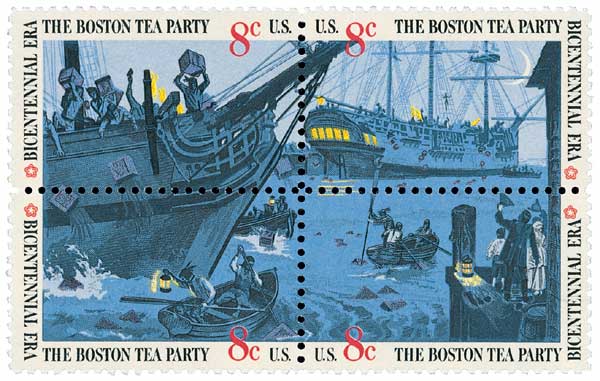
Following the Seven Years’ War and the unpopular Stamp Act of 1765, Revere’s business began to suffer. To help pay the bills, he began working as a dentist. During this time, Revere befriended early protestors of the Stamp Act and eventually joined the Sons of Liberty. Revere soon began to produce political engravings picturing British troops marching into Boston as well as the Boston Massacre. In December 1773, Revere helped plan the Boston Tea Party.
Around that same time, Revere began working as a courier for the Boston Committee of Public Safety. In this role he traveled to New York and Philadelphia to share news of the political unrest in Boston. In the coming months, the British closed the port of Boston and forced citizens to allow soldiers to stay in their homes. Soon Revere and a group of 30 others began meeting in secret to share intelligence on the movements of British troops. In December 1774, Revere embarked on ride to Portsmouth, New Hampshire after hearing rumors that the British were landing there. Though the rumors weren’t true, his ride led the locals to raid Fort William and Mary.
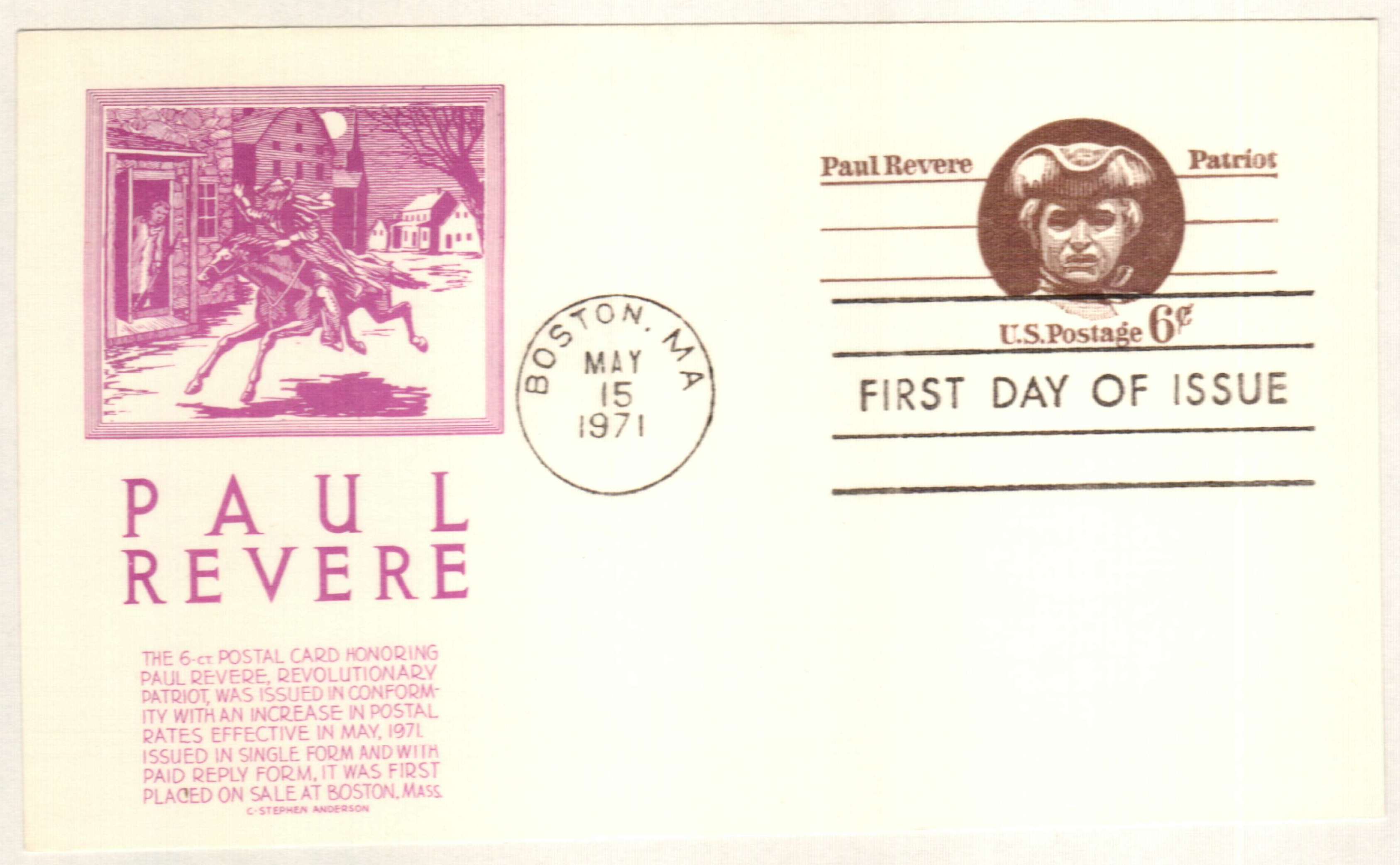
Months later, on April 18, 1775, Revere embarked on his most famous ride. At the time, the British were planning to go to Lexington to arrest Samuel Adams and John Hancock for their role in the independence movement. Revere was tasked with riding to Lexington to warn the men. The weekend before his planned ride, Revere spoke with fellow members of the Sons of Liberty, and they arranged a lantern signal using the bell-tower of North Church to warn of the British approach. The signal would be sent by lighting one lantern if they marched by land or two if they rowed “by sea” across the Charles River to Cambridge.
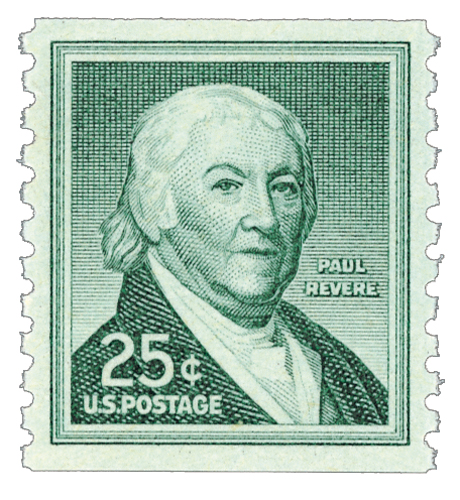
On the evening of April 18, Revere traveled to the North Church to have the patriots stationed there light two lanterns to alert Charlestown that the British would arrive by sea. Two associates then rowed Revere across the Charles River. Once across, he borrowed a horse and set out on his ride. Along the way to Lexington, he stopped at each house that he passed to warn them that the British were coming.
Revere reached Lexington around midnight and warned Adams and Hancock of the approaching British. Revere then set out to warn the people of Concord, but the British captured him and two other riders. Revere was eventually released and had to walk back to Lexington.
With Boston under siege following the battles of Lexington and Concord, Revere couldn’t return home, so he settled in Watertown, Massachusetts. Revere wanted to join the rebel cause, but was denied a commission in the Continental Army. Instead, he served as a courier for the provincial congress and printed local currency to pay the soldiers. In the wake of a major gunpowder shortage, Revere was hired to travel to Philadelphia to explore the only working powder mill in the colonies. He was eventually able to get the information he needed and established a mill that produced tons of gunpowder.
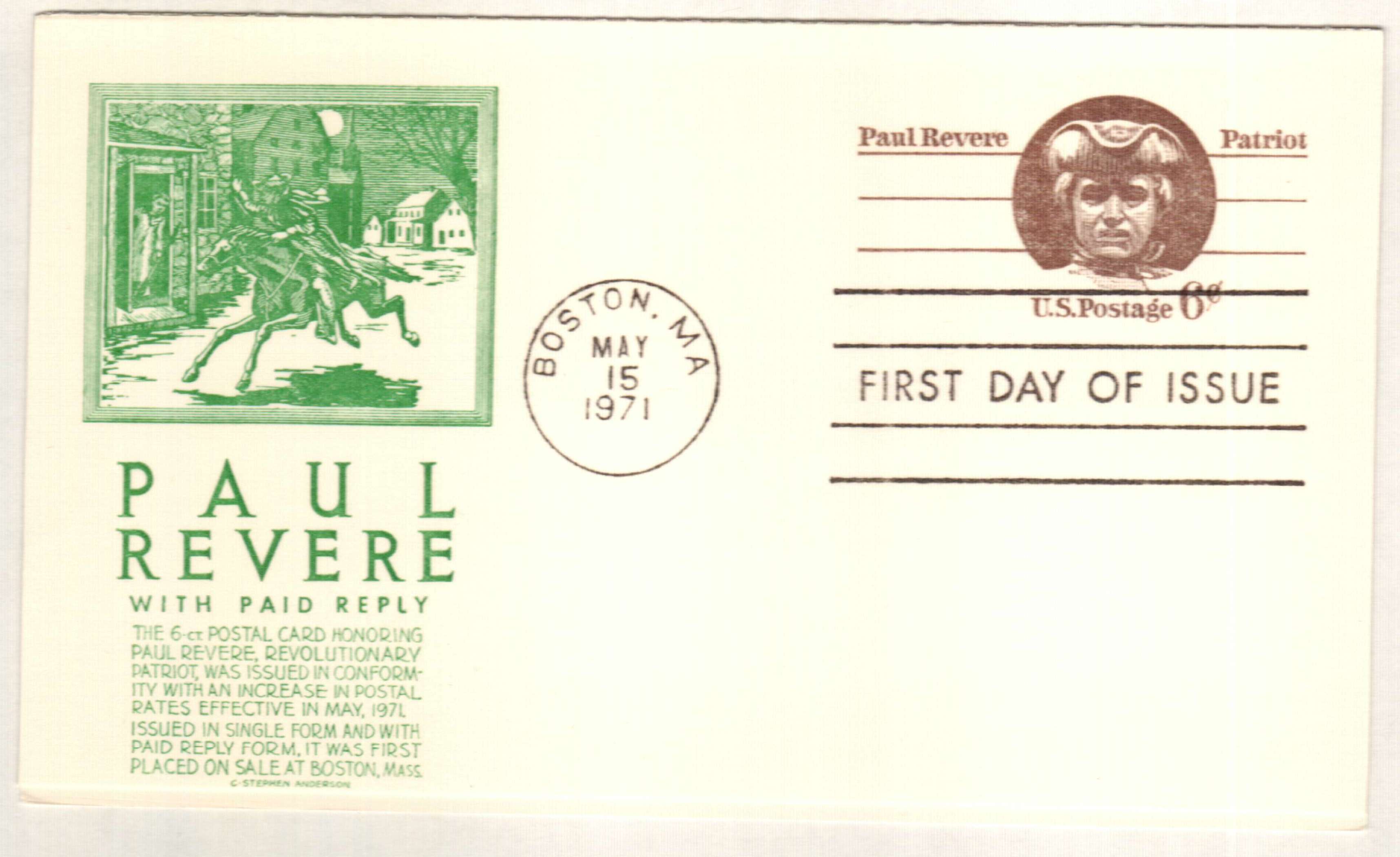
Revere was finally allowed to return to Boston in 1776 and also finally received a commission with the infantry and later artillery. In that role, he helped defend Boston harbor and was frequently placed in command of his post. His engineering experience was crucial in maintaining the artillery and he designed and built a caliper to measure cannonballs and cannonball bore holes.
Revere later participated in an expedition to capture a British base in Newport, Rhode Island. He and his regiment then built and maintained artillery batteries there. He went on to participate in the failed Penobscot Expedition and ultimately left the military.
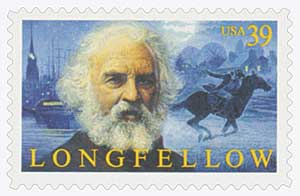
After the war, Revere tried to find success as a merchant, but didn’t have the necessary connections in England. However, he was a skilled silversmith, which earned him money to develop new technologies for mass production. Revere was able to adopt more efficient production processes, so he could make goods for a larger customer base, as opposed to limited high-end products. Soon Revere established an iron foundry where he produced stove backs, fireplace tools, and window weights. From there he went on to create church bells, and quickly became one of the nation’s most well-known bell casters. Next Revere began producing cannons for state and federal governments as well as private citizens. In 1801, Revere opened North America’s first copper mill in Canton, Massachusetts.
Revere remained politically active even as his business flourished. He supported Alexander Hamilton’s national banking ideas and the importance of a robust economy to a growing America. Revere retired in 1811 and died on May 10, 1818. Revere Copper is still produced today in Rome, New York (not far from Mystic’s home in Camden).
1965 25¢ Paul Revere
Liberty Series Coil
City: Wheaton, Maryland
Quantity: Unknown
Printed by: Bureau of Engraving and Printing
Printing Method: Rotary Press
Perforations: 10 Vertically
Color: Green
Birth Of Paul Revere

Paul Revere was born on January 1, 1735, according to the modern calendar (December 21, 1734 by the Old Style calendar) in the North End of Boston.
Revere’s father was a French Huguenot named Apollos Rivoire who had moved to Boston when he was 13 and worked for a silversmith. His father eventually Anglicized his name and got married. Paul was the third of 12 children, and the oldest son to survive.
Revere left school when he was 13 to apprentice with his father. When his father died in 1754, Revere was too young to take over as master of the family silver shop. Two years later he enlisted in the provincial army to join in the French and Indian War. Revere didn’t serve long in the military and eventually returned home to Boston where he took over the silver shop and got married.

Following the Seven Years’ War and the unpopular Stamp Act of 1765, Revere’s business began to suffer. To help pay the bills, he began working as a dentist. During this time, Revere befriended early protestors of the Stamp Act and eventually joined the Sons of Liberty. Revere soon began to produce political engravings picturing British troops marching into Boston as well as the Boston Massacre. In December 1773, Revere helped plan the Boston Tea Party.
Around that same time, Revere began working as a courier for the Boston Committee of Public Safety. In this role he traveled to New York and Philadelphia to share news of the political unrest in Boston. In the coming months, the British closed the port of Boston and forced citizens to allow soldiers to stay in their homes. Soon Revere and a group of 30 others began meeting in secret to share intelligence on the movements of British troops. In December 1774, Revere embarked on ride to Portsmouth, New Hampshire after hearing rumors that the British were landing there. Though the rumors weren’t true, his ride led the locals to raid Fort William and Mary.

Months later, on April 18, 1775, Revere embarked on his most famous ride. At the time, the British were planning to go to Lexington to arrest Samuel Adams and John Hancock for their role in the independence movement. Revere was tasked with riding to Lexington to warn the men. The weekend before his planned ride, Revere spoke with fellow members of the Sons of Liberty, and they arranged a lantern signal using the bell-tower of North Church to warn of the British approach. The signal would be sent by lighting one lantern if they marched by land or two if they rowed “by sea” across the Charles River to Cambridge.

On the evening of April 18, Revere traveled to the North Church to have the patriots stationed there light two lanterns to alert Charlestown that the British would arrive by sea. Two associates then rowed Revere across the Charles River. Once across, he borrowed a horse and set out on his ride. Along the way to Lexington, he stopped at each house that he passed to warn them that the British were coming.
Revere reached Lexington around midnight and warned Adams and Hancock of the approaching British. Revere then set out to warn the people of Concord, but the British captured him and two other riders. Revere was eventually released and had to walk back to Lexington.
With Boston under siege following the battles of Lexington and Concord, Revere couldn’t return home, so he settled in Watertown, Massachusetts. Revere wanted to join the rebel cause, but was denied a commission in the Continental Army. Instead, he served as a courier for the provincial congress and printed local currency to pay the soldiers. In the wake of a major gunpowder shortage, Revere was hired to travel to Philadelphia to explore the only working powder mill in the colonies. He was eventually able to get the information he needed and established a mill that produced tons of gunpowder.

Revere was finally allowed to return to Boston in 1776 and also finally received a commission with the infantry and later artillery. In that role, he helped defend Boston harbor and was frequently placed in command of his post. His engineering experience was crucial in maintaining the artillery and he designed and built a caliper to measure cannonballs and cannonball bore holes.
Revere later participated in an expedition to capture a British base in Newport, Rhode Island. He and his regiment then built and maintained artillery batteries there. He went on to participate in the failed Penobscot Expedition and ultimately left the military.

After the war, Revere tried to find success as a merchant, but didn’t have the necessary connections in England. However, he was a skilled silversmith, which earned him money to develop new technologies for mass production. Revere was able to adopt more efficient production processes, so he could make goods for a larger customer base, as opposed to limited high-end products. Soon Revere established an iron foundry where he produced stove backs, fireplace tools, and window weights. From there he went on to create church bells, and quickly became one of the nation’s most well-known bell casters. Next Revere began producing cannons for state and federal governments as well as private citizens. In 1801, Revere opened North America’s first copper mill in Canton, Massachusetts.
Revere remained politically active even as his business flourished. He supported Alexander Hamilton’s national banking ideas and the importance of a robust economy to a growing America. Revere retired in 1811 and died on May 10, 1818. Revere Copper is still produced today in Rome, New York (not far from Mystic’s home in Camden).










